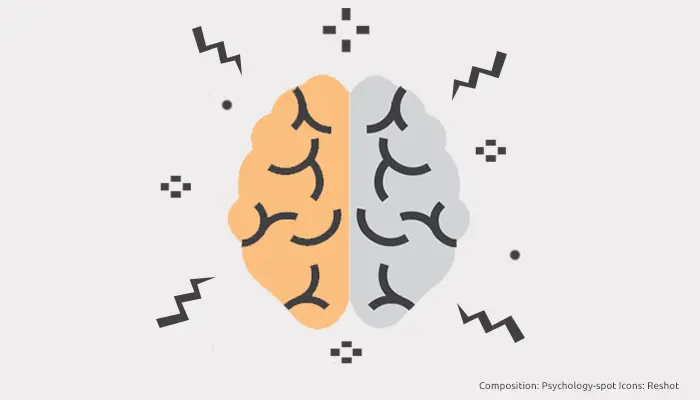
“I’m not fat, I’m strong” could be the motto of people suffering from megarexia, an underestimated problem that nevertheless affects approximately 2.7% of the world’s population. These people do not accept that they are overweight since when they look in the mirror they do not perceive those extra kilos. As a result, they do nothing to lose it, which often leads them into a self-destructive spiral of uncontrollable weight gain.
Megarexia: what exactly is it?
The person who suffers from anorexia nervosa, looks in the mirror and sees himself “fat” despite the fact that he is below the appropriate weight for his gender, height and age. In contrast, the person who suffers from megarexia when looking in the mirror perceives himself as thin, even though his body mass index indicates that he is overweight or even obese.
Unlike anorexia, which is recognized as an eating disorder, megarexia has not yet been officially recognized. It was Dr. Jaume Brugos who first mentioned the term megarexia in the 1992 book, “Isoproteic Diet”.
However, this disorder is also known as phatorexia and is more common in men than in women, especially when they are over 45 years of age, although it can develop at any age.
Phatorexia: symptoms and health consequences
The persons suffering from megarexia develop a series of dysfunctional habits and thought patterns that end up affecting their quality of life, physical health, and emotional balance. The symptoms of megarexia that indicate that the disorder has established are usually:
– Distorted and unrealistic perception of the body. The person looks in the mirror and looks too thin, although it really borders on being overweight or even obese. However, some avoid looking at themselves in full-length mirrors and others don’t take full-length photos because they can’t accept their figure.
– Tendency to eat a lot and consume an excess of hypercaloric foods with few nutrients, which lead to excessive weight gain or even nutritional deficiencies.
– Low self-esteem, derived mainly from insecurity and dissatisfaction with their body.
These people also tend to reject everything that can put them face to face with reality, so they usually don’t like to weigh themselves to not know their real weight, they don’t enjoy shopping because choosing the sizes of the clothes would force them to recognize their true weight, which causes feelings of confusion, frustration, and sadness. It is also common for them to wear baggy clothes to hide their figure.
It should be noted that, like anorexia, megarexia can become a serious, chronic and progressive eating disorder. In fact, these people tend to underestimate the effects of a poor diet on health. As a result, it is not surprising that they are more likely to suffer from diseases such as diabetes, metabolic syndrome or cardiovascular conditions.
It must be remembered that obesity – no matter how hard you try to normalize it – is not simply an aesthetic issue, but can cause serious health problems in people who suffer from it, since it has been associated with the appearance of a host of disorders.
Megarexia, psychological and social causes
As with most psychological disorders where there is no single cause, megarexia is no exception. Genetic, environmental and social factors converge in the development and maintenance of this problem.
In fact, it’s more common in people who grew up in an environment where at least one parent had an inappropriate relationship with food. If someone has grown up in such a home, the chances of developing megarexia are higher.
People with megarexia may be using a defense mechanism to avoid seeing reality. That’s why they resort to phrases like “I’m not that fat” or “I’m not fat, I’m strong.”
It is also likely that at the base there is a difficulty controlling their impulses, tolerating frustration or delaying gratification. The consumption of unhealthy foods often goes hand in hand with emotional self-regulation problems. Perhaps many of these people have learned to turn to food to calm negative emotions, which sends them into a toxic loop.
Likewise, low self-esteem could facilitate the emergence of megarexia or exacerbate it. If the person does not love himself enough or believes that he is unlovable, he is likely to unconsciously punish himself and not take care of himself, so he will not pay attention to his body.
“Rejected Self”, the mechanism behind megarexia
In Western societies, more and more people are obsessed with their physical appearance, an obsession that can make it difficult for them to function in everyday life and put their health or even life at risk.
As a result, many of these people are ashamed of their body, which they consider ridiculous or outside of social standards, so those feelings end up within a “rejected self”, a dissociative part of themselves where all negative thoughts, perceptions and emotions about their body are concentrated.
In the distortion of the body image, the person dissociates from the appearance of his body in an attempt to avoid what it represents and what comes from it; that is, everything that it transmits, experiences or expresses. As a result of this barrier, day-to-day experiences do not change the person’s perception of his body. It is as if his bodily representation remained static, immune to the effect of the passage of time and bodily experiences.
The person with phatorexia denies and dissociates from the reality of his body. That repudiated self also blocks and returns a false image of body size and weight. The image that stands between the real image and the reflected image returned by the mirror is a thin image of itself, when the weight is well above its corresponding weight.
The denial of real weight is absolute: they claim to be thin, even though the scale indicates otherwise, but they think that it is probably wrongly calibrated. Before the mirror, the denial is the same as before the scale. In fact, one day a person was surprised to discover that the scale read 108 kilos, when the last time he weighed himself it indicated 49 kilos.
She said that she saw that she was changing in size, but without being aware that her body was changing, so she ate non-stop since she suffered from hyperphagia. Since the patient looked fine, she did not bother in the least to follow a healthy diet, which is dangerous for her health.
How to deal with this disorder incorporating the rejected “self”?
The main problem of the person with phatorexia is that they are not able to assess the extent of their disorder, so they continue to lead unhealthy lifestyles. These people are overweight, but do not recognize it because they have started a psychological process through which they deny their body image and health problems.
That means that, in a way, they know they have a problem, but they are not willing to accept it and face it. As a result, it is difficult for persons with megarexia to do anything to change their lifestyle.
In the treatment of megarexia, three essential aspects must be worked on:
1. Perceptual component to improve the precision with which body size is perceived or estimated, avoiding the process of underestimation of body dimensions.
2. Cognitive-affective component to improve feelings, attitudes, cognitions, and evaluations generated by the body itself with the aim of eliminating anxiety, dissatisfaction or maladaptive concerns.
3. Behavioral component to promote a healthier lifestyle and avoid avoidance behaviors that reinforce megarexia.
Once the person has stabilized and the most general defenses have been neutralized, channeling negative criticism into more positive thought patterns, we can begin to work with that “rejected self” and the distortion of the body image.
Ultimately, the treatment of phatorexia is aimed at the persons being able to identify their body and accept it as such, understand the problem and learn to feel and care for their body, instead of denying or rejecting it.
Sources:
Granese, V. et. Al. (2021) Do subjects with obesity understimate their body size? A Narrative review of estimation methods and explaining theories. Psychology, Society & Education; 10(3): 265–273.
Seijo, N. (2016) El yo rechazado: cómo trabajar con la distorsión de la imagen corporal en los trastornos alimentarios. ESTD Newsletter; 5(4): 5-14.
Leone, J. & Edward, J. (2014). Recognition and treatment of muscle dysmorphia and related body image disorders. Journal of Athletic Training; (4): 352-359.



